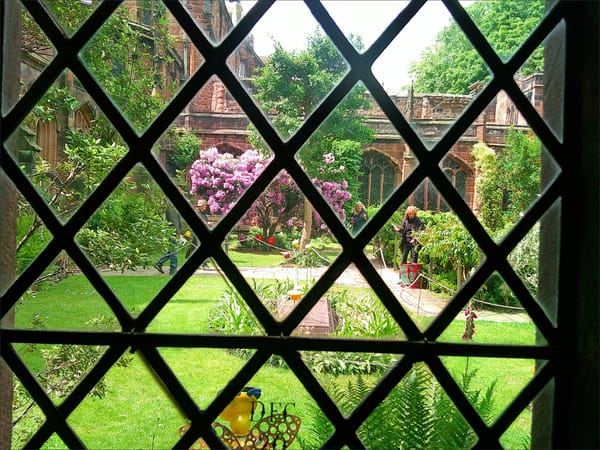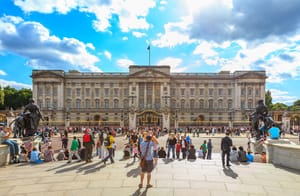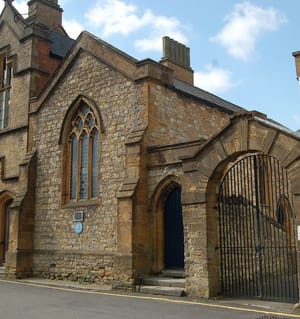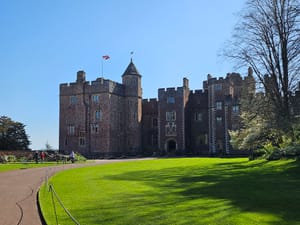In the last week of May 2025, my wife and I took a trip to northwest England, staying in the historic city of Chester, in the county of Cheshire. It was a deliberate pause – a step back from the daily hum of digital life.
No social media, no email, no text messages, no feeds to scroll. Just the two of us, off the grid, walking ancient streets, soaking in the atmosphere, and continuing our journey toward a more balanced life – one where “life” takes precedence over “work”.
It was a delightful trip, giving us both a terrific refresh and perspective on life and what work/life balance means for us. In this reflective post, I share some thoughts and observations from our time away – and what the experience revealed to me about history, atmosphere, and the quiet contrasts that shape our sense of place.
Chester’s Story: From Fortress to City
Founded as a Roman fortress in the 1st century AD, Chester – then known as Deva Victrix – was one of the most important military outposts in Roman Britain. Its strategic location near the River Dee made it an ideal base for controlling routes to North Wales and the Irish Sea.
The Roman legacy is still visible today in the city’s layout, the remains of its amphitheatre, and stretches of original Roman walls that now form part of the most complete city walls in Britain. Walking those walls offers a literal step through time, circling a city that has reinvented itself through every era.
After the Romans withdrew in the early 5th century, Chester endured centuries of transformation. It became a key Anglo-Saxon stronghold and later a Norman bastion following the conquest of 1066. The Normans reshaped much of the city’s fabric – Chester Castle was built, and the cathedral began its long evolution from a Benedictine abbey to the Gothic structure seen today.
By the Middle Ages (or medieval period, approximately from the year 1000 to about 1450), Chester was a flourishing trading hub, its wealth reflected in the timber-framed buildings and unique two-tiered shopping galleries known as the Rows, which still line its streets.
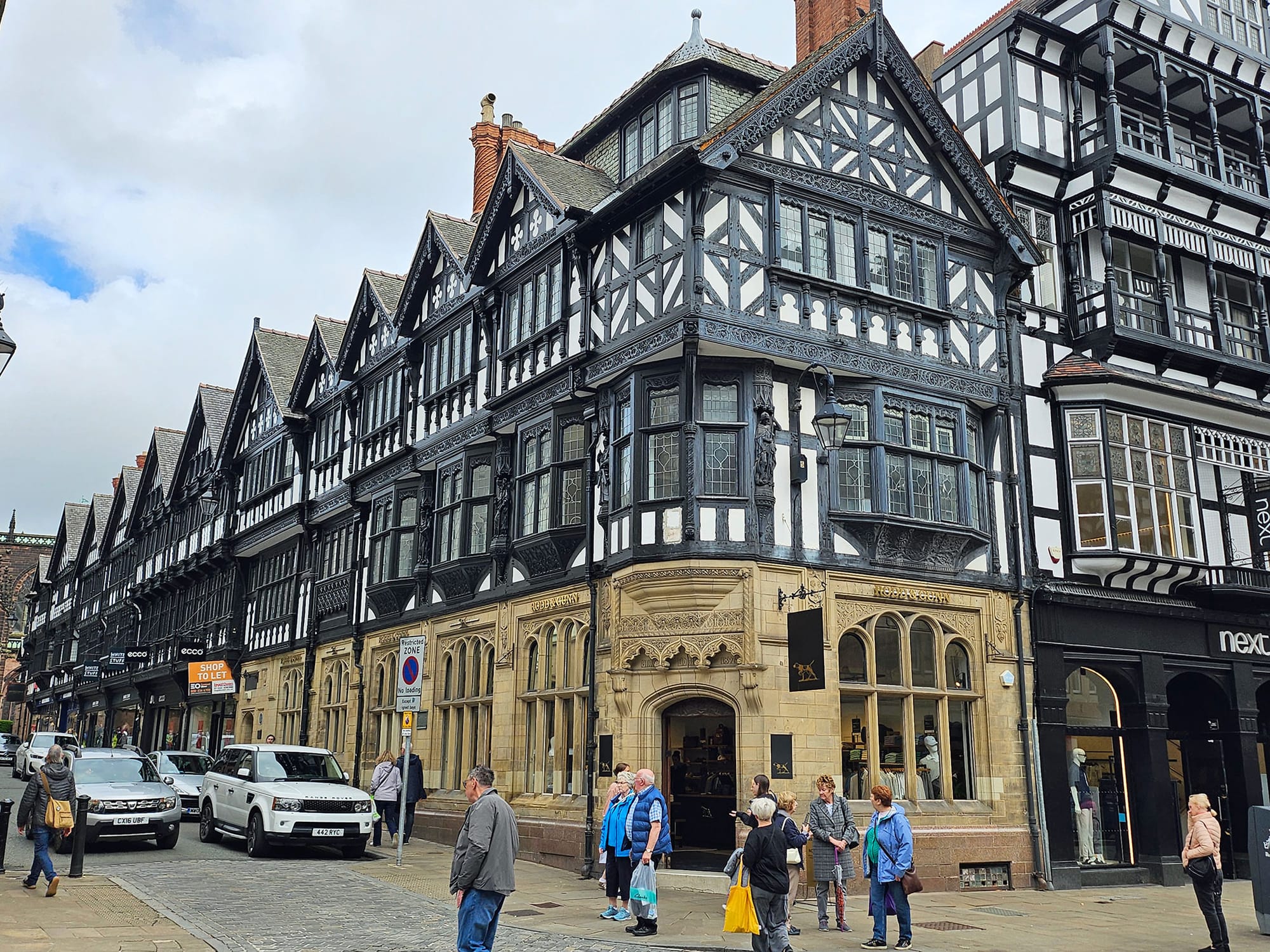
Chester also played a significant role during the English Civil War in the 17th century. As a Royalist stronghold, the city endured a long and brutal siege by Parliamentary forces, lasting from 1644 until its fall in early 1646. The siege caused widespread hardship, and traces of this turbulent time remain visible today in the city's defences, in plaques and memorials, and in the scars left on buildings that stood through the conflict.
Throughout the centuries, Chester retained its identity as a border city – part military post, part market town, part ecclesiastical centre. The border between England and Wales runs right through the city, with some streets and areas being situated in both England and Wales.
Even as the Industrial Revolution transformed much of the northwest, Chester held onto its medieval character, becoming a destination rather than an engine of industry.
That character endures today in the city's blend of Roman, medieval, and Victorian architecture, its cobbled lanes, and its carefully preserved heritage, making it one of the most distinctive and atmospheric cities in England.
Exploring the heritage and atmosphere of two iconic Anglican cathedrals
With Chester's rich history as our backdrop, we continued a pursuit we enjoy on such visits: visiting churches and cathedrals. These buildings have a way of revealing stories that extend far beyond their bricks and stained glass.
They offer glimpses into the lives of those who built, worshipped in, and preserved them. More than any brochure or guidebook, they offer context: to the past, the present, and even to the ways a city sees itself.
On this visit, we explored two cathedrals – in Chester and Liverpool – that offered very different experiences of sacred space. One steeped in centuries of history, the other shaped by 20th-century ambition. We began in Chester.
Chester Cathedral: A Living Chronicle

Chester Cathedral is a building where time feels layered rather than linear. Its roots lie in a Benedictine abbey established in 1092, which itself stood on the site of an earlier Saxon church. But the story stretches even further back. This plot of land has likely held religious significance since Roman times, and as with much of Chester, you can sense the continuity beneath the surface.
The abbey became Chester Cathedral in 1541 during the reign of Henry VIII, as part of the sweeping religious and political changes that accompanied the English Reformation. Dissolving monasteries and repurposing religious houses as cathedrals was a strategic move to reinforce royal authority, and Chester's elevation reflected both its ecclesiastical importance and its position as a regional power.
The building itself is a fascinating blend of architectural styles, echoing the many phases of its development. While the dominant style is Gothic, with its pointed arches, soaring ceilings, and intricate stonework, remnants of Norman design still exist in the cloisters and chapter house.
Restoration work from 1868-75 under Sir George Gilbert Scott gave the cathedral much of its current appearance, preserving the medieval character while repairing the wear of centuries.
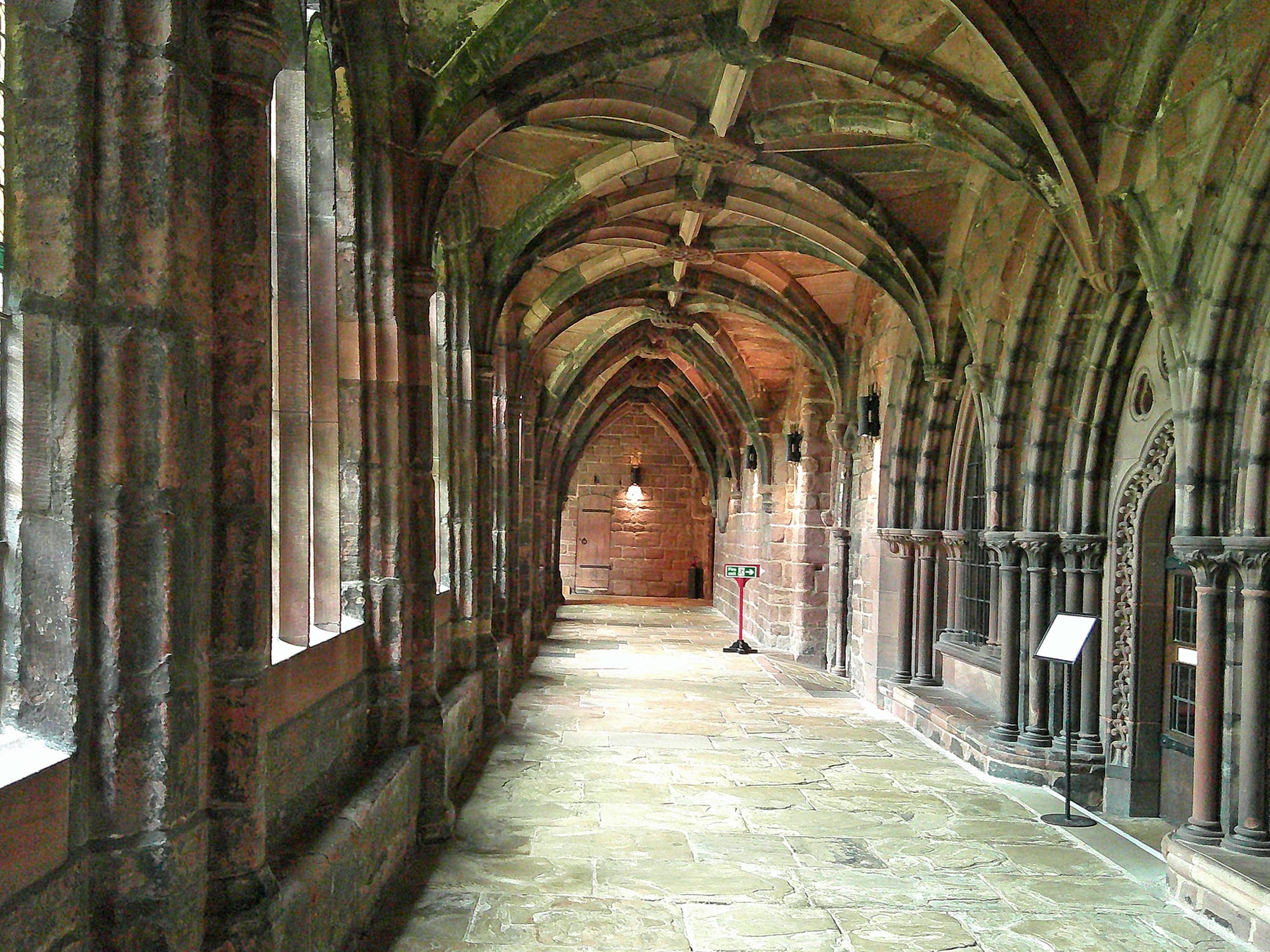
What makes Chester Cathedral feel so alive is not only its architecture and vibrant history, but also its modern use. It functions as a place of worship, education, music, and community life. During our visit, the space felt warm and inviting – living history in the truest sense.
The contrast with Liverpool’s cathedral, though just as impressive in scale, could not have been starker.
Liverpool Cathedral: A Monument to Ambition
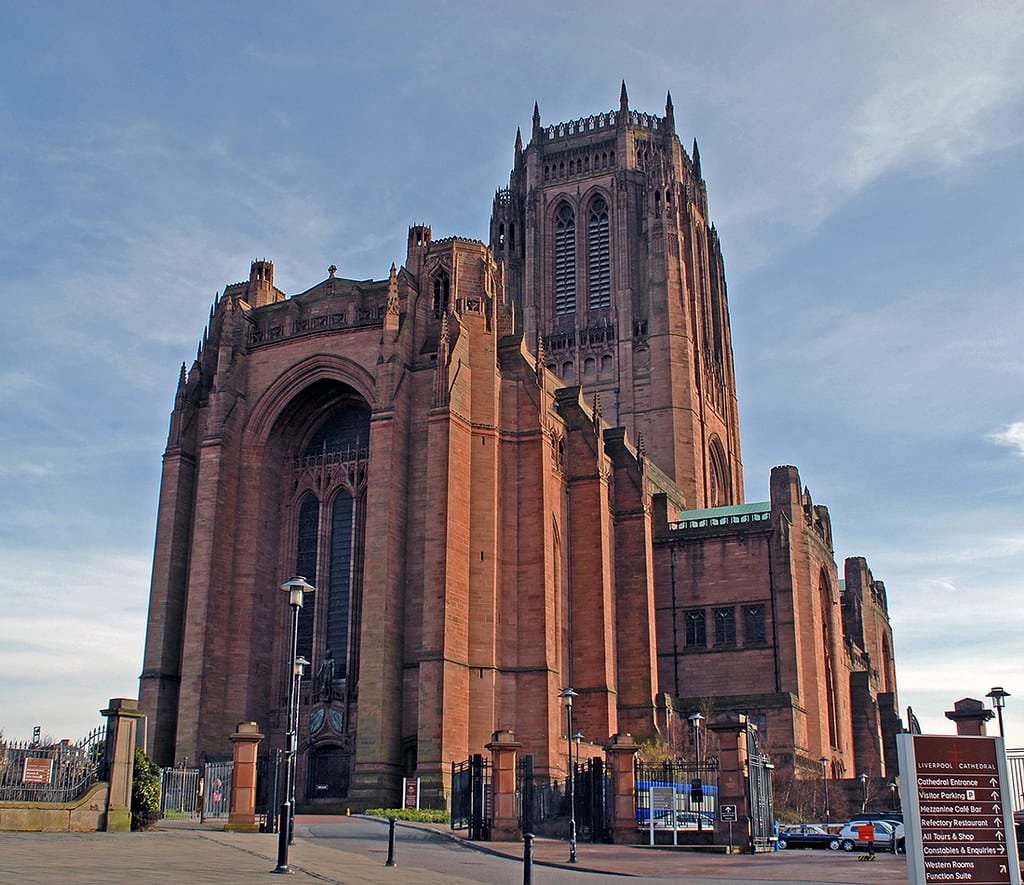
The Anglican Cathedral in Liverpool is the kind of building you don’t just visit – you approach it. Towering above the city from its sandstone perch on St James’s Mount, it dominates the skyline and radiates the ambition of the early 20th-century Church of England.
While it may appear to have stood for centuries, it is in fact a relatively modern creation, born of bold vision and long, determined effort.
Plans for a new cathedral in Liverpool began in the early 1900s, when the city’s status as a major port and commercial centre called for a religious building worthy of its prominence. After an open competition in 1901, the commission was awarded to 22-year-old architect Giles Gilbert Scott (grandson of Sir George Gilbert Scott, who led restoration work in the 19th century at Chester Cathedral), who would later become one of Britain’s most celebrated designers. Among his many achievements is the K2 design of the iconic red public telephone box in 1924.
Scott's vision for the new cathedral merged Gothic tradition with modern engineering, resulting in a design that honoured ecclesiastical heritage while embracing monumental scale.
The foundation stone was laid in 1904, but construction would span almost three-quarters of the 20th century, interrupted by two world wars and periods of economic difficulty. The first section to be completed was the Lady Chapel in 1910.
From there, progress was slow but steady, with various parts of the cathedral opening in stages. The central tower, which rises to 331 feet (about 100 metres), was completed in 1942. The building wasn’t formally finished until 1978 – 74 years after the first stone was laid.
Today, Liverpool Cathedral is the largest cathedral in the UK and the fifth-largest in the world. Its vast nave, dramatic tower, and restrained ornamentation give it a sense of weight and grandeur.
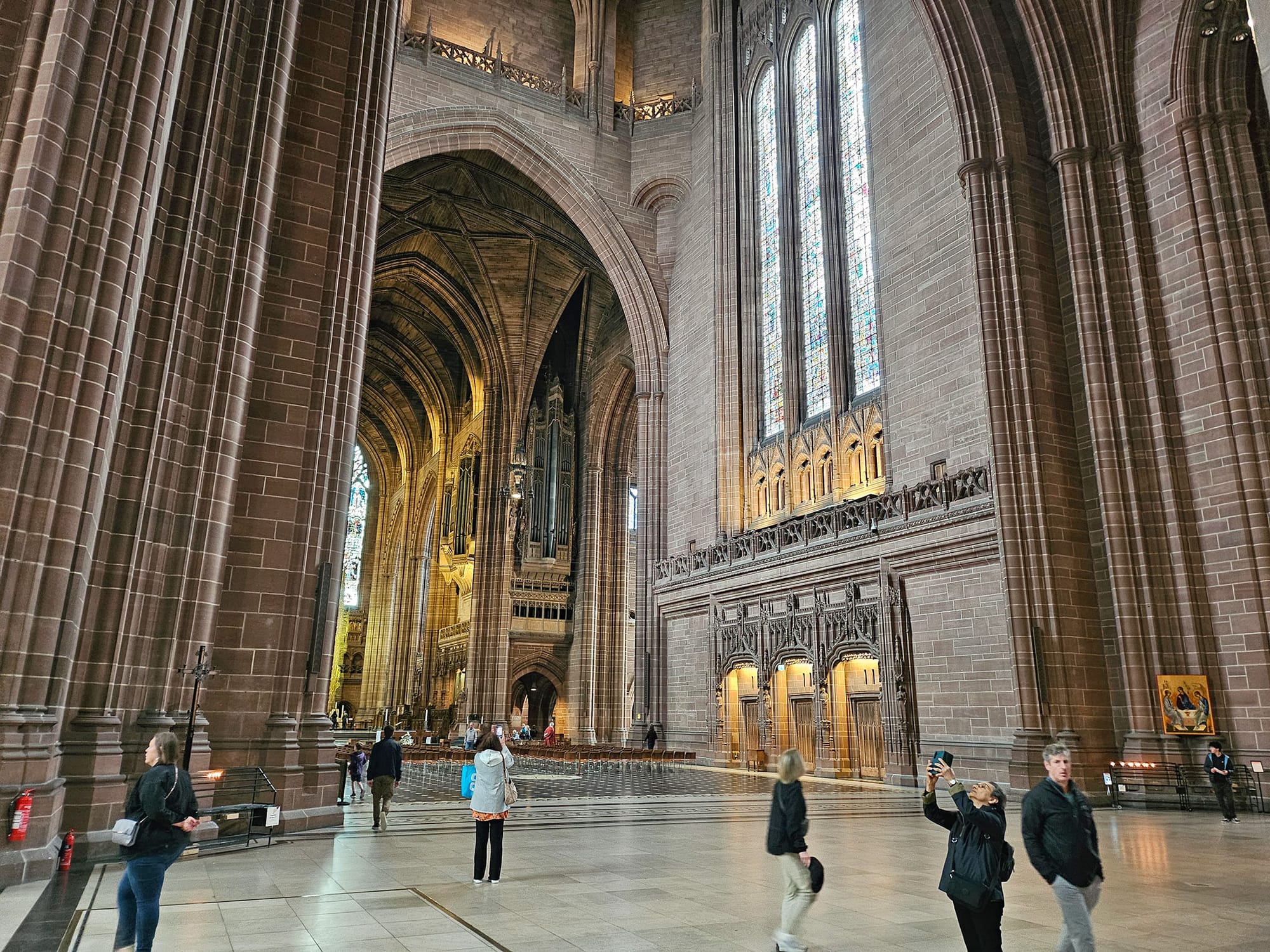
And yet, despite its vast scale and impressive design, I came away from Liverpool’s cathedral feeling a little underwhelmed. Yes, the space is awe-inspiring in its size, and yes, the craftsmanship is exceptional. But on the day we visited, it felt curiously devoid of warmth or presence.
It’s not that the cathedral lacks significance. On the contrary, its modern history is intertwined with the story of the city itself – its resilience, its creative spirit, its shifting identity.
Perhaps it was the lighting, the sparse footfall, or the cavernous spaces that swallowed sound and intimacy. It could have been the weather that day – grey, cloudy sky, very strong wind, low temperature. Or perhaps it’s simply that age brings depth. Still, a look through the cathedral's Instagram account reveals plenty of activity.
But for me, it didn’t quite spark the emotional connection that Chester did. The contrast between the two couldn’t have been sharper: one ancient and intimate, the other monumental but detached. Chester Cathedral has had centuries to soak up life, while Liverpool’s is still, in some sense, waiting to be fully lived in.
Different expressions of spirit
On Friday, as we drove back home to Somerset, in southwest England, I kept thinking about those two buildings and what they represent. Not just different styles of architecture or differing historical timelines, but different expressions of spirit.
Our journey north was part of our broader project to re-centre life. And what better metaphor for reflection than two cathedrals – one rooted in deep history, the other striving to find its place in modernity?
Both offer lessons, and both leave a mark. Just not always in the same way.
If you’ve visited either of these places, perhaps your experience was different. Or maybe, like us, you found something unexpectedly revealing between the stones. Either way, I’d love to hear about what you felt.


